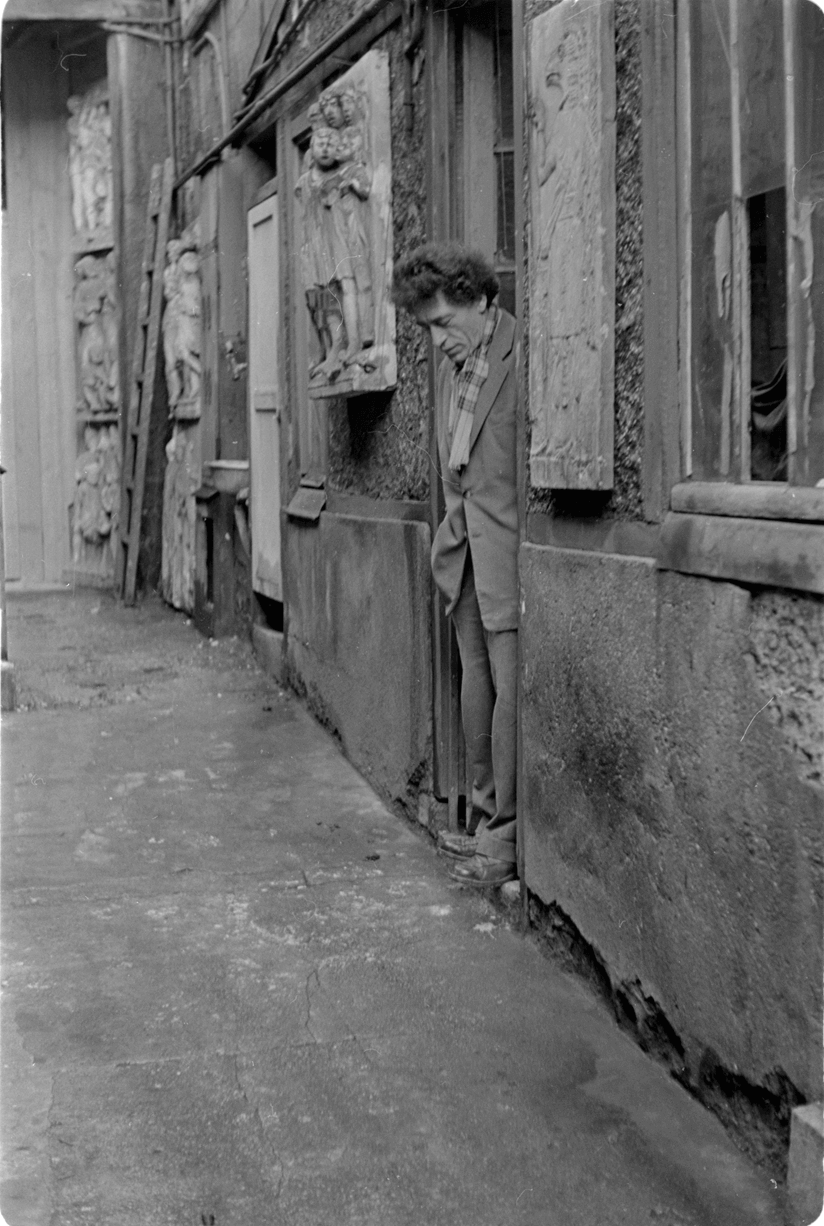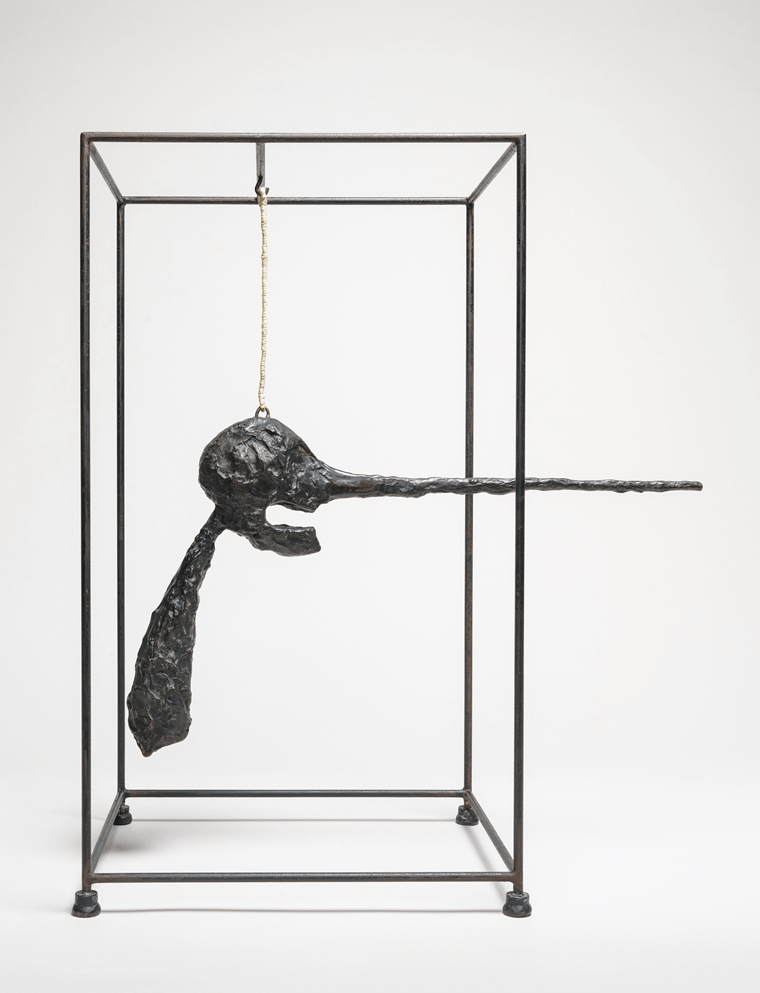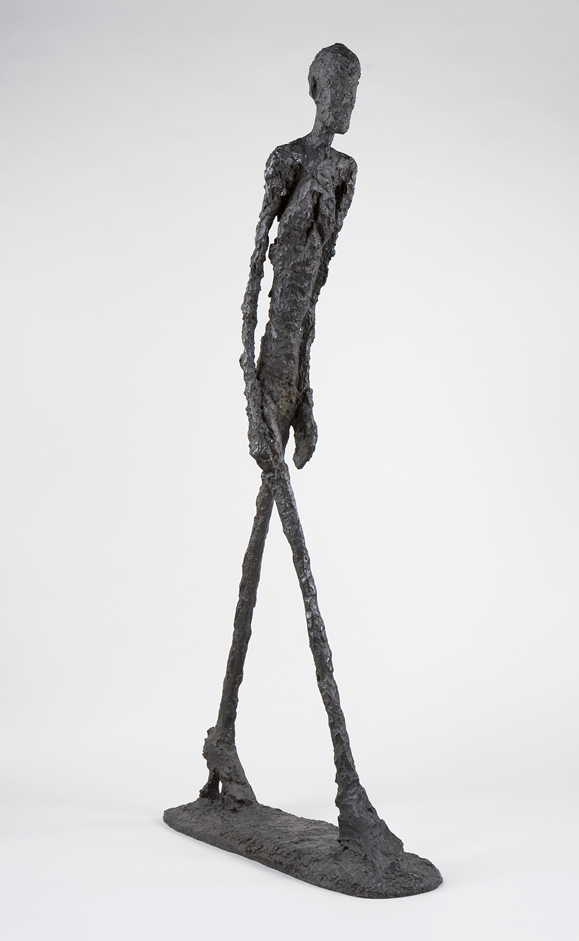When I left the Guggenheim this morning after previewing the new exhibition ‘Giacometti,’ I had a big smile on my face and in my heart. Because it is exactly how I want to feel when visiting a museum show. There are so many moving moments when exploring the work of this preeminent artist, whose oils, bronzes, and plasters sparkle in the white Frank Lloyd Wright-designed rotunda. There is much joy, fulfillment, and another level of understanding that this exhibition, the first major museum show in the US in more than 15 years of the provocative Alberto Giacometti (1901-1966) provides, energized you in the most positive way. I cannot think of a better way to spend a summer afternoon, then traveling through the European avant-garde movements, Cubism, Surrealism, and, and, finally, his own mature art, rooted in the philosophy of Existentialism (focusing on the human individual, his authenticity and freedom) at the Guggenheim (through the fall). The show when Giacometti first arrived in Paris in 1922, discovering Picasso, Brancusi, and Lipchitz, and shifting his vision. By 1935, he distanced himself from Surrealism, and began discovering the unconscious, and during WWII, while in exile in Switzerland, created tiny figures in his hotel room. With the end of the War, and upon his return to Paris, Giacometti embarked upon the most productive period of his career until the end, and while suffering cancer, he meditated on death and loss. And then, when you think that you are completely fulfilled and you somewhat sad that the exhibition is over, then, at the top of the Museum, comes the culmination, the peak. It is a film, which everything exhibited into life, when you see Giacometti in his studio, modeling in clay, walking to his favorite café, painting a portrait, his daily routine. This concluding section of the exhibition provides the ultimate understanding of artist and his eternal quest for the human condition. Above: Alberto Giacometti Dog (Le Chien), 1951 (cast 1957) Bronze, 44.2 x 96.8 x 15.7 cm Hirshhorn Museum and Sculpture Garden, Smithsonian Institution, Washington, DC, Gift of Joseph H. Hirshhorn, 1966 © 2018 Alberto Giacometti Estate/Licensed by VAGA and ARS, New York





